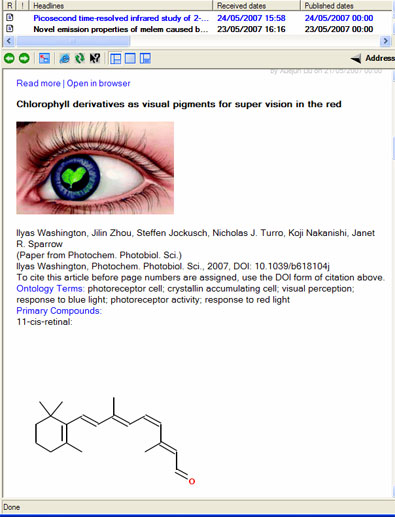<span >(<b>Update - 2007.07.28:</b> I meant to reference in this entry Pierre Lindenbaum’s post back in May <a href="http://plindenbaum.blogspot.com/2007/05/is-there-any-xmp-in-scientific-pdf-no.html">Is there any XMP in scientific pdf ? (No)</a>, which btw also references Roderic Page’s post on <a href="http://iphylo.blogspot.com/2007/05/xmp.html">XMP</a> but forgot to add in the links in my haste to scoot off. Well, truth is we still can’t answer Pierre in the affirmative but at least we can take the first steps towards rectifying this.)
<span >I’ve been revisiting Adobe’s <a href="http://www.adobe.com/products/xmp/">XMP</a> just recently. (I blogged <a href="/blog/xmp-capabilities-extended//">here</a> about the new <a href="http://www.adobe.com/devnet/xmp/">XMP Toolkit 4.1</a> back in March.)
<span >I wanted to share some of my early experiences. First off, after a couple of previous attempts which got pushed aside due to other projects, I managed to compile the libraries and the sample apps that ship with the C++ SDK under Xcode on the Mac. I also needed to compile <a href="https://libexpat.github.io/">Expat</a> first which doesn’t ship with the distribution.
<span >OK, so far, so good. What this basically leaves one with is a couple of XMP dump utilities (<i>DumpMainXMP</i> and <i>DumpScannedXMP</i>) and two others (<i>XMPCoreCoverage</i> and <i>XMPFilesCoverage</i>) which is a good start anyways for exploring. And turns out that our PDFs already have some workflow metadata in them. This is encouraging because the SDK allows apps to read and update existing XMP packets from files, though not to write new packets into files (as far as I understand).
<span >I thought I would take this opportunity anyway to:
<span >See what XMP metadata terms we might consider adding
<span >Try and add these to existing XMP packets<span >Ugly details are presented below, but by updating the XMP packet metadata in one of our PDFs (<i>Nature 445, 37 (2007), C.J. Hogan</i>) we can teach Acrobat Reader to read - see the “before” (<a href="https://web.archive.org/web/20130815224916/http://0-nurture-nature-com.libus.csd.mu.edu/">PDF here</a>) and “after” (<a href="https://web.archive.org/web/20130815224916/http://0-nurture-nature-com.libus.csd.mu.edu/">PDF here</a>) screenshots in the figure.
<span ><img src="/wp/blog/images/acrobats.png" alt="acrobats.png" width="583" height="466" />
<span >Of course, this is really about much more than getting Adobe apps to read/write metadata. It’s about using XMP as a standard platform for embedding metadata in digital assets for <i>third-party apps</i> to read/write. If we can put ID3 tags into our podcasts then why not XMP packets into other media?</p>







